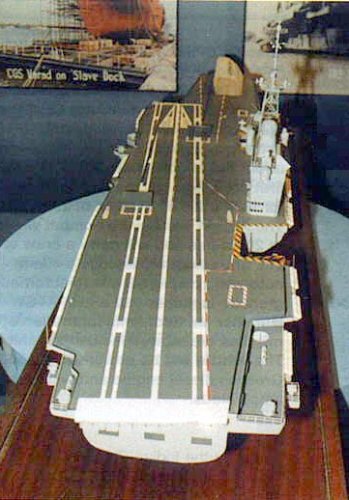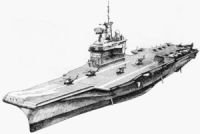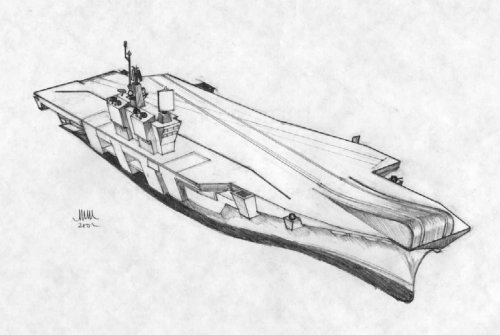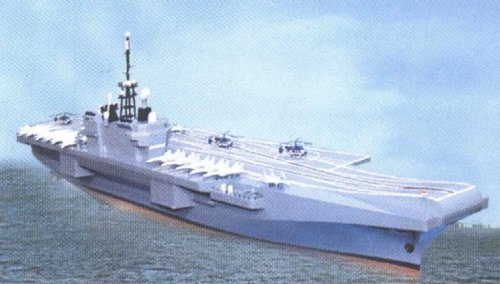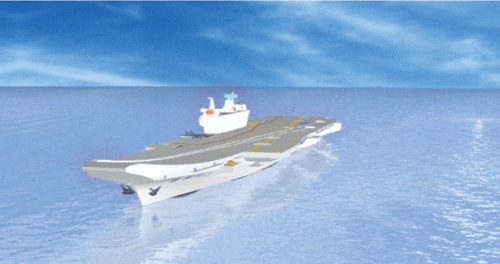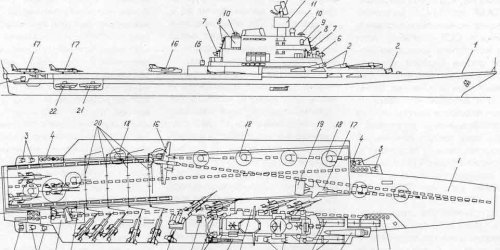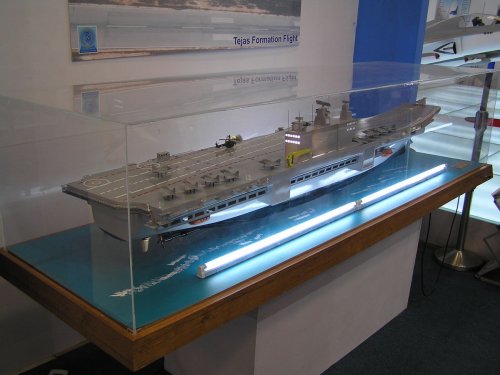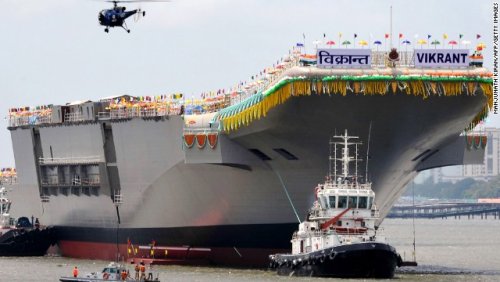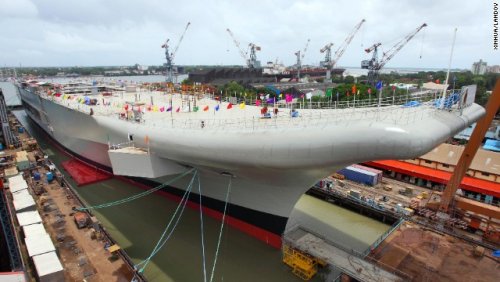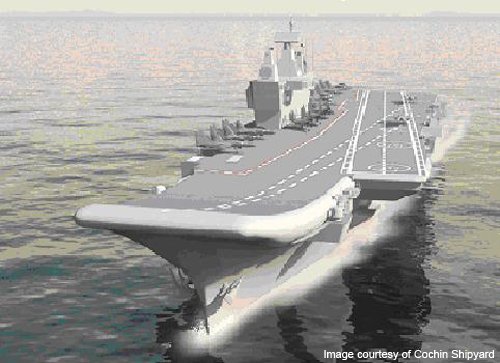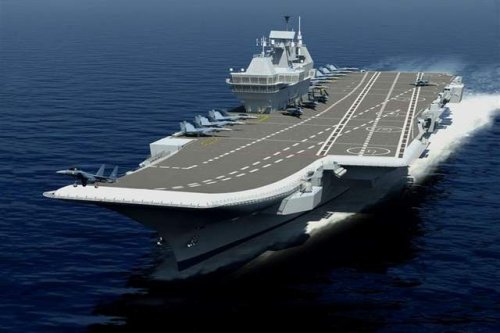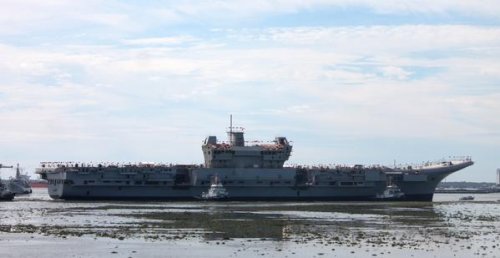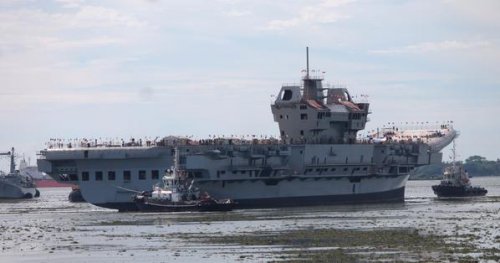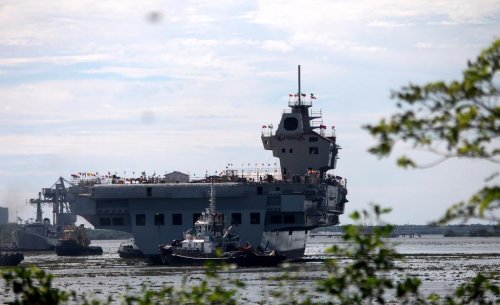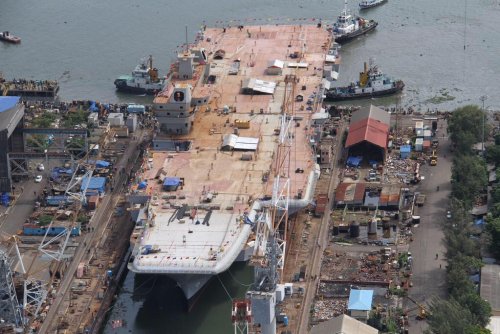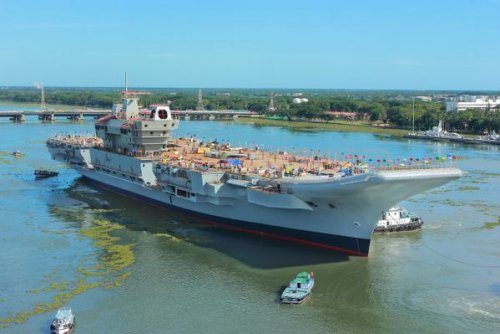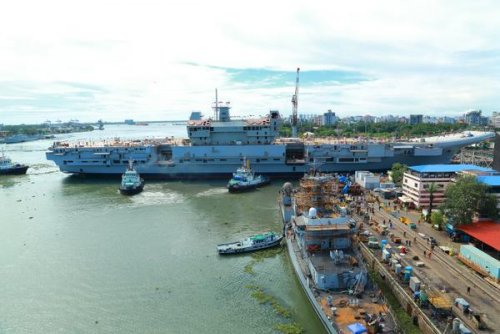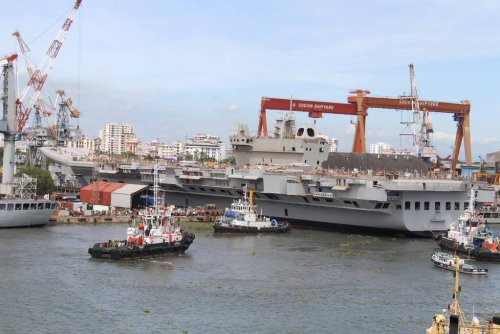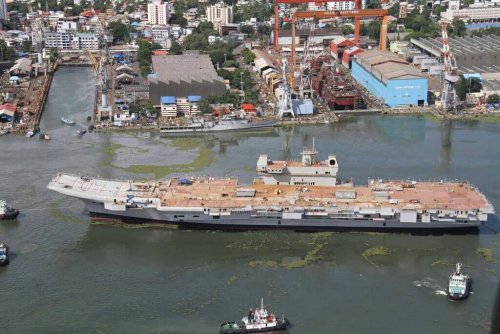- Joined
- 3 January 2006
- Messages
- 1,223
- Reaction score
- 944
Shortly after the recommissioning of the ex-Hermes as the the INS Viraat in 1987, there were reports from India of long term plans for a 4 carrier fleet,with two new construction hulls and both ex-Hermes/Viraat and ex-Leviathan/Vikrant being retained in service until the late 1990s.
A contract was signed with DCN for the design of a large conventional carrier, although although it is unclear if the contract was signed in 1988 or 1989. The tonnage of the design has been variously quoted at 25,000 or 28,000 tons, although there is some indication that the figure was closer to 35,000 or 40,000 tons. In any event, IN's carrier aspirations were directed towards a smaller Garibaldi-class based design in the early 90s, reportedly of 17,000 tons displacement before mid-to late 90s reports of a 24,000 ton design.
The first concrete indication of a collaboration with DCN was a model of a conventional, CATOBAR carrier show at the IDEX show in 1999. At the time, the displacement was quoted as 32,000 tons, although it is unclear whether this was a standard or full load figure. The model in question depicted a flight deck arrangement similar to the Charles de Gaulle, complete with the distinctive, trapezoidal elevators and an entirely French radar fit. The island, placed between the elevators, with an outwardly flared shape, resembled that of the contemporary DCN "BIP" LHD proposals.
A contract was signed with DCN for the design of a large conventional carrier, although although it is unclear if the contract was signed in 1988 or 1989. The tonnage of the design has been variously quoted at 25,000 or 28,000 tons, although there is some indication that the figure was closer to 35,000 or 40,000 tons. In any event, IN's carrier aspirations were directed towards a smaller Garibaldi-class based design in the early 90s, reportedly of 17,000 tons displacement before mid-to late 90s reports of a 24,000 ton design.
The first concrete indication of a collaboration with DCN was a model of a conventional, CATOBAR carrier show at the IDEX show in 1999. At the time, the displacement was quoted as 32,000 tons, although it is unclear whether this was a standard or full load figure. The model in question depicted a flight deck arrangement similar to the Charles de Gaulle, complete with the distinctive, trapezoidal elevators and an entirely French radar fit. The island, placed between the elevators, with an outwardly flared shape, resembled that of the contemporary DCN "BIP" LHD proposals.

